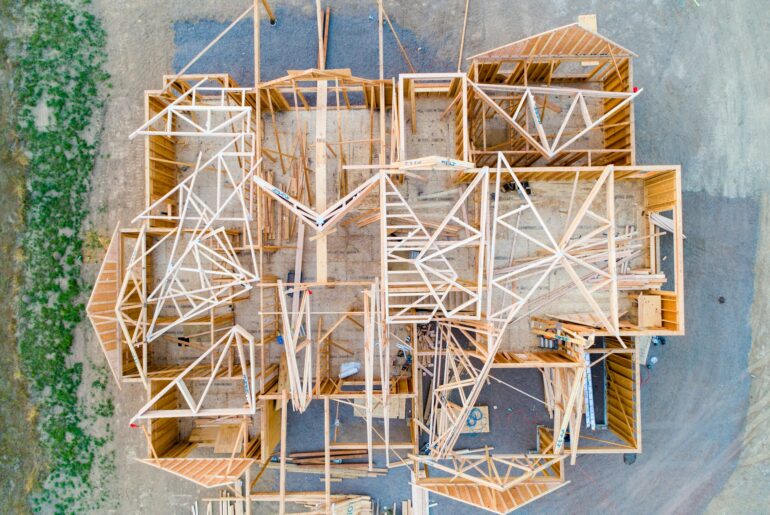This article may contain references to products or services from one or more of our advertisers or partners. We may receive compensation when you click on links to those products or services. Nonetheless, our opinions are our own.
The information presented in this article is accurate to the best of our knowledge at the time of publication. However, information is subject to change, and no guarantees are made about the continued accuracy or completeness of this content after its publication date.
Key Highlights
- A builder’s warranty protects homeowners from costs associated with construction defects.
- Most builder warranties offer 1-2-10 coverage: 1 year for craftsmanship, 2 years for systems, and 10 years for structural elements.
- Home warranties primarily focus on normal wear and tear of appliances and systems.
- Builder’s warranties are usually included at no additional cost for newly constructed homes.
- Understanding your warranty’s coverage and limitations is crucial.
Introduction
Purchasing a new home is a significant financial commitment, and ensuring peace of mind is crucial. A builder’s warranty serves as a safety net, shielding homeowners from unexpected issues caused by construction defects or material failures. This guide explores the details of builder’s warranties, their importance, and how homeowners can make the most of this protection.
Understanding Builder’s Warranties
The excitement of moving into a new home is unparalleled. However, construction issues can arise, leading to unexpected repair costs and frustration. A builder’s warranty is a legally binding document outlining the builder’s responsibility to address problems related to workmanship, materials, and structural components problems.
The Basics of a Builder’s Warranty
A builder’s warranty is not legally required in every state, but many reputable builders offer one as part of their service. This warranty protects homeowners from significant defects due to poor workmanship or faulty materials.
The primary focus is on covering major structural defects that could affect the stability of the home, such as issues with the foundation, roofing, load-bearing walls, and framing. However, it does not cover damage from natural disasters or homeowner-related negligence.
Key Differences Between Builder’s and Home Warranties
A builder’s warranty covers structural defects and workmanship issues related to construction. In contrast, a home warranty—which is typically purchased separately—covers appliances and home systems that fail due to normal wear and tear. Understanding this distinction helps homeowners choose the right protection for their property.
Voted "Best Overall Budgeting App" by Forbes and WSJ
Monarch Money helps you budget, track spending, set goals, and plan your financial future—all in one app.
Get 50% OFF your first year with code MONARCHVIP
Essential Coverage Under Builder’s Warranty
Understanding what a builder’s warranty covers can help homeowners avoid unexpected repair costs and protect their investment.
What Structural Defects Are Covered?
A builder’s warranty primarily covers major structural defects that compromise the home’s safety and integrity. This includes:
- Foundation issues (e.g., major cracks or settling)
- Roof framing defects
- Load-bearing walls and floor system problems
- Defective materials affecting structural integrity
Most warranties operate under a 1-2-10 plan:
- 1 year: Covers workmanship and materials (e.g., drywall, paint, trim, doors, and windows).
- 2 years: Covers mechanical systems, including electrical, plumbing, and HVAC.
- 10 years: Covers structural defects affecting load-bearing components.
Coverage for Systems and Craftsmanship
A builder’s warranty doesn’t just protect against structural failures. It also ensures that key home systems function properly:
- Mechanical Systems: Covers HVAC (heating, ventilation, and air conditioning) malfunctions.
- Electrical Systems: Includes wiring, outlets, and circuit breakers.
- Plumbing Systems: Covers leaks, faulty piping, and drainage issues.
- Workmanship Quality: Covers defects in flooring, cabinetry, and other finish work.
Beginner’s Guide to Obtaining a Builder’s Warranty
Obtaining a builder’s warranty is usually straightforward for homeowners purchasing newly built homes, as most builders include it in the sales agreement. However, it’s important to understand the details.
What You Need to Get Started
- Ensure the builder provides a written copy of the warranty.
- Review what is and isn’t covered, including time limits and exclusions.
- Discuss potential additional coverage options with the builder.
Step 1: Evaluating Your New Home’s Warranty Needs
Each home has different warranty needs based on its materials, construction complexity, and builder reputation. Consider these factors:
- Foundation and structural components
- Roofing materials and durability
- Electrical and plumbing installations
- Overall construction quality
Step 2: Choosing the Right Builder’s Warranty
If multiple warranty options are available, compare them carefully. Here’s a breakdown of what to consider:
| Factor | Description |
|---|---|
| Coverage Period | Standard is a 1-2-10 plan (workmanship, systems, structural). |
| Coverage Inclusions | What’s protected? Ensure major structural elements and workmanship are included. |
| Reputation | Choose builders with a history of honoring warranty claims. |
| Cost vs. Value | A slightly higher home price with a strong warranty may be a better long-term investment. |
Conclusion
A builder’s warranty is crucial to protecting your new home investment. Understanding what it covers—structural defects, major systems, and workmanship—can help homeowners avoid costly repairs. Homeowners should review their warranty terms, be aware of its limitations, and stay proactive in filing claims. By ensuring they have the right coverage, homeowners can enjoy their new home with confidence.
Frequently Asked Questions
What Is Typically Not Covered by a Builder’s Warranty?
Builder warranties do not cover normal wear and tear, weather-related damage, pest infestations, or homeowner modifications. It is likely excluded if an issue isn’t related to builder workmanship.
How Long Does a Builder’s Warranty Last?
Most follow the 1-2-10 model:
- 1 year for craftsmanship and materials.
- 2 years for electrical, plumbing, and HVAC systems.
- 10 years for major structural components.
Can I Extend My Builder’s Warranty?
While builder warranties aren’t typically extendable, homeowners can purchase a home warranty or service contract after coverage expires for continued protection on appliances and systems.
What Should I Do If a Problem Is Not Covered?
If a claim is denied, homeowners can explore:
- Homeowners insurance for damage due to external factors.
- Mediation or legal action if a builder fails to honor a covered defect.
- Hiring an independent home inspector to verify claims.
How Do Builder’s Warranties Differ by State?
Each state has different laws regarding builder warranties. Some, like New Jersey, require mandatory new home warranties under state construction codes. Others may leave warranties as optional agreements between homeowners and builders.

Reviewed and edited by Albert Fang.
See a typo or want to suggest an edit/revision to the content? Use the contact us form to provide feedback.
At FangWallet, we value editorial integrity and open collaboration in curating quality content for readers to enjoy. Much appreciated for the assist.
Did you like our article and find it insightful? We encourage sharing the article link with family and friends to benefit as well - better yet, sharing on social media. Thank you for the support! 🍉
Article Title: Builder’s Warranty: What It Covers and Why You Should Have One
https://fangwallet.com/2025/02/06/builders-warranty/The FangWallet Promise
FangWallet is an editorially independent resource - founded on breaking down challenging financial concepts for anyone to understand since 2014. While we adhere to editorial integrity, note that this post may contain references to products from our partners.
The FangWallet promise is always to have your best interest in mind and be transparent and honest about the financial picture.
Become an Insider

Subscribe to get a free daily budget planner printable to help get your money on track!
Make passive money the right way. No spam.
Editorial Disclaimer: The editorial content on this page is not provided by any of the companies mentioned. The opinions expressed here are the author's alone.
The content of this website is for informational purposes only and does not represent investment advice, or an offer or solicitation to buy or sell any security, investment, or product. Investors are encouraged to do their own due diligence, and, if necessary, consult professional advising before making any investment decisions. Investing involves a high degree of risk, and financial losses may occur including the potential loss of principal.
Source Citation References:
+ Inspo












































